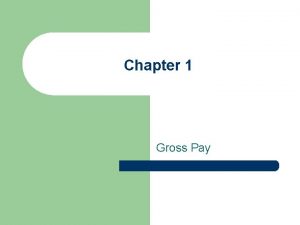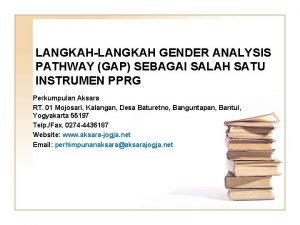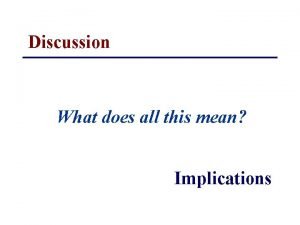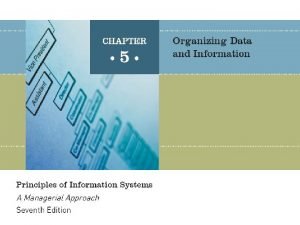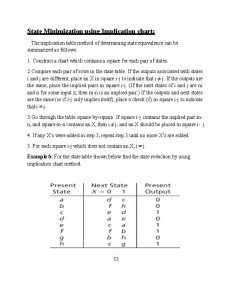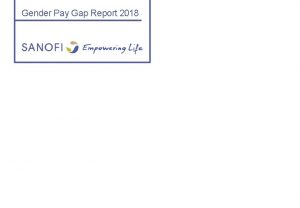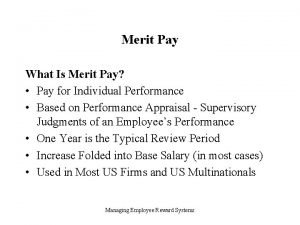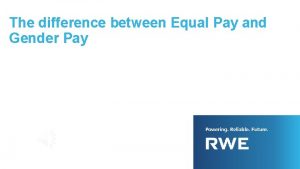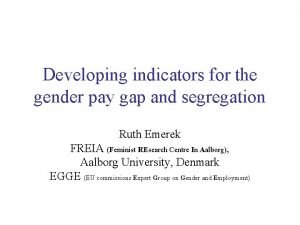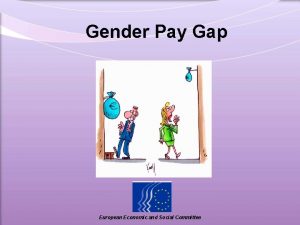Dynamics of gender pay gap and its implications
















- Slides: 16

Dynamics of gender pay gap and its implications for industrial relations: A comparative study of India, Pakistan and Sri Lanka “ 18 th International Labour and Employment Relations Association (ILERA) World Congress 2018” At COEX, Seoul, Korea 23 -27 July 2018 Rupa Korde FLAME University, Pune, India Devansh Parikh University of Sydney, Australia www. flame. edu. in Biju Varkkey Indian Institute of Management, Ahmedabad, India www. sydney. edu. au www. iima. ac. in Paycheck. in www. wageindicator. org www. paycheck. in

Introduction: Gender diversity and its consequences in relation to work and economy are much discussed topics today “ Labour Force Participation Rate (LFPR) • Globally: FLFPR dropped from 52. 4% in 1995 to 49. 6% in 2015, whereas the MLFPRs were 79. 9% and 76. 1% respectively • South Asian and East Asian countries: the gap was 0. 6% in 1995 and at 25. 5% in 2015 • Difference in LFPRs of men and women for 2017 was 51. 63%, 57. 77% and 39. 07% for India, Pakistan and Sri Lanka respectively (ILOSTAT, 2017) Gender Pay Gap (GPG) Importance of GPG Measures the earning differences between women & men in paid employment in the labour market It is one of the many indicators of gender inequality in a country that emerge on examining the labour market participation in terms of gender (Education International, 2011)

Similarities in India, Pakistan and Sri Lanka: “ • Historical Legacy: Members of the Commonwealth • Equal existence: All three became independent countries around the same time • Cultural: All these countries show a high similarity in culture • Economy: All these countries are categorized in lower middle income by the World Bank. • Labour Laws: Each country has a labour ministry with a goal to provide welfare to the labour workforce. Labour law history of all three countries have been influenced by the colonial rule

Research Gaps: “ • Most GPGs studies are limited to time, area of coverage, inter-industry comparison, etc. and hence fail to provide a wholistic picture • Most of the studies conducted are based on sample survey data conducted by state agencies which may be made public after a time lag : • India: NSSO & Indian Human Development Surveys and Occupation Surveys • Pakistan: Labour Force Surveys & Pakistan Integrated Household Surveys • Sri Lanka: Integrated Surveys & Sri Lankan Quarterly Labour Force Surveys

Reasons for Gender Pay Gap: In the Organised Labour Sector from Literature “ Labour Market Factors Family Factors Social Factors Other Factors Direct labour market discrimination Unmarried women Social fabric Elasticity of labour supply curve Cultural aspects Mobility Entry Barriers Responsiveness to wage change Occupational segregation The selection effect Human capital discrimination Pre-market discrimination Requirements and duties of parenthood Undervaluation of women’s work Women with no children Return to labour market after career Low Bargaining Power Preconceived notions about women’s Unionization

Research Questions : “ • Does a gender pay gap exist in the organised labour sector of India, Pakistan and Sri Lanka? • Does gender have a significant relationship with the gross hourly wage for every individual, controlling for other factors such as years of experience, marital status, industry and level of education?

Wage. Indicator Foundation, Amsterdam Share and Compare Wages, Labour Law and Career Wage. Indicator Foundation is a non profit network supported by a group of top universities – like Indian Institute of Management Ahmedabad - trade unions, employers organisations, media and millions of users and contributors around the world, online and offline.

42, 506/5, 228/9, 504 Respondents across India/Pakistan/Sri Lanka 2012 - 2015 Reponses from four years Respondents Different age groups, varied industries and various hierarchical positions in their respective occupations

Methodology: “ • Step 1: GPG - Absolute Mean Gross Hourly Wage • Step 2: Median Hourly Wage - GPG: Variable Specific • Step 3: Two sample t-test • Step 4: OLS • Step 5: Variance Inflation Factor (VIF) • Step 6: Cross tabulation

Gender Pay Gap Trend: “ Gender Pay Gap India Pakistan Sri Lanka -13. 16% -18. 95% -20. 28% -28. 33% -19. 21% -27. 41% -28. 95% -33. 87% -34. 26% -37. 71% -13. 91% -38. 49% 2012 2013 2014 2015

Gender Pay Gap GPG Marital Status: Marital status affects wages paid to an individual. GPG is generally higher for married women as compared to unmarried women Skill Level: GPG is higher for unskilled jobs vis-a-vis skilled jobs; it widens further for highly skilled jobs Industry: The jobs taken up by men and women are often different, whether they are across sectors, industries, occupations, types of jobs, or types of firms. GPG crisis is seen in each industry Educational Qualification: Women attaining higher educational qualifications, stand a higher chance of facing discrimination which translated into GPG India Pakistan Sri Lanka High Low Low High High

Inferences: “ • OLS regression analysis also confirms that GPG does exist • Gender coefficient is negative throughout (across years and countries), i. e. , women are paid less than men • Years of work experience and marital status are highly significant • With an increase in work experience, the gaps reduce • When it comes to marriage unmarried women are not paid well • Most of the lower education qualifications variables, such as no education, primary (and equivalents), higher (and equivalents) and bachelors (and equivalents) are associated with a lower hourly wage

Qualification Premium in Favour of Women: Industry India Pakistan Sri Lanka Manufacturing No Yes Power & Electricity Yes No No Construction Yes No Wholesale and Retail No No No Hospitality No Yes Finance Fluctuating and volatile results Administration No No No Real Estate No No No Science No No No Health No No No Education No No No Transport No No No

Conclusion: “ • Despite the efforts of the governments, over time, the GPG have institutionalized • Gender Pay Gap does exist; although narrowing over time • Our study could establish that narrowing of GPG is directly related to education levels of women, and the pattern is clear across all the three countries • Variety of reasons contribute to GPG, cannot be pinpointed to one • Trade unions and the Industrial Relations system can play a

Limitations & future prospects: “ • Being an online voluntary survey, the data is biased towards those people who have access to the Internet and are inclined to complete the questionnaire • Captures majorly the organized sector in these three countries • Omitted variable bias • Censored data • High country specific differences; characteristics for jobs and dominating industries

Thank you Rupa Korde FLAME University, Pune, India Devansh Parikh University of Sydney, Australia Biju Varkkey Indian Institute of Management, Ahmedabad, India rupa. korde@flame. edu. in devanshmp@gmail. com bvarkkey@iima. ac. in
 The simple truth about the gender pay gap
The simple truth about the gender pay gap Gender pay gap lösungsansätze
Gender pay gap lösungsansätze Strategic gender needs and practical gender needs
Strategic gender needs and practical gender needs Designing pay structure
Designing pay structure Section 1-1 hourly pay answers
Section 1-1 hourly pay answers Contoh gender analysis pathway (gap)
Contoh gender analysis pathway (gap) How much did wanda pay in taxes this pay period
How much did wanda pay in taxes this pay period Demotivators and edward deci theory
Demotivators and edward deci theory Pay gap
Pay gap Ergash gap turlari
Ergash gap turlari A_______ bridges the specification gap between two pls.
A_______ bridges the specification gap between two pls. Discussion and implications
Discussion and implications The emigree structure
The emigree structure Its halloween its halloween the moon is full and bright
Its halloween its halloween the moon is full and bright Database approach to data management
Database approach to data management Constructive tools examples
Constructive tools examples Implication table state minimization
Implication table state minimization




